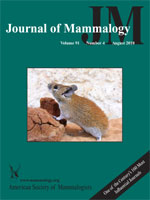Population fluctuations of 13 rodent species in 5 habitats were monitored for 16 years in the central Negev Desert, Israel. Analysis of factors affecting population dynamics of 9 common and abundant species demonstrated that densities of most rodent species in the late summer, after the end of reproduction, were determined mainly by total precipitation during the previous rainy season. Rodent densities in the winter, before the reproductive season, were determined mainly by their densities in the previous (late summer) season. Rodent populations in dry river beds (wadi) demonstrated either no or negative correlations with total rainfall, suggesting episodes of population crash due to flash winter flooding. For all species occurring in more than 1 habitat, densities, at least in some habitats, were correlated with their contemporary densities in other habitats. For these species, processes of density-dependent habitat selection were indicated using isodars analysis. Generally, population dynamics of desert rodents were determined by the complex interactions of extrinsic (rainfall) and intrinsic mechanisms but were modified by density-dependent habitat selection.
How to translate text using browser tools
16 August 2010
Long-term study of population dynamics and habitat selection of rodents in the Negev Desert
Georgy Shenbrot,
Boris Krasnov,
Sergei Burdelov
ACCESS THE FULL ARTICLE

Journal of Mammalogy
Vol. 91 • No. 4
August 2010
Vol. 91 • No. 4
August 2010
desert rodents
habitat selection
isodar analysis
long-term study
population dynamics
rainfall




